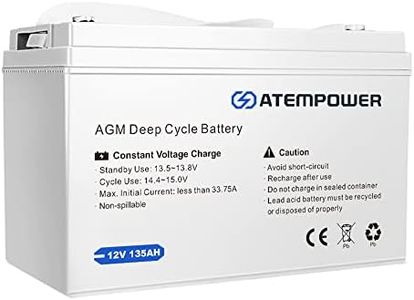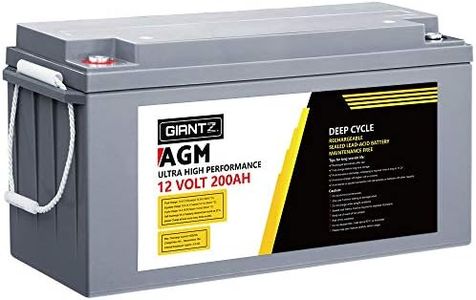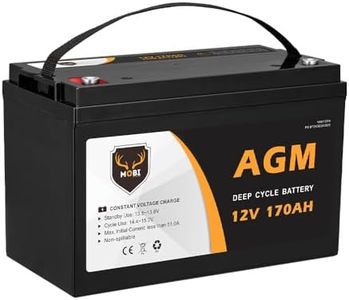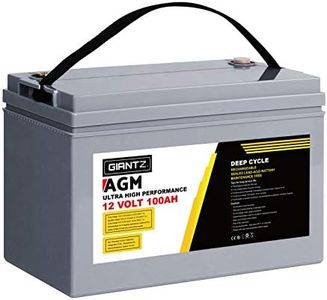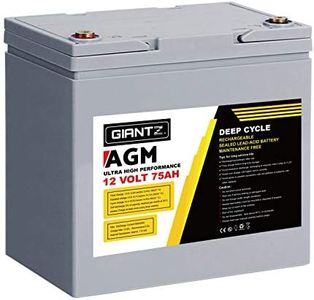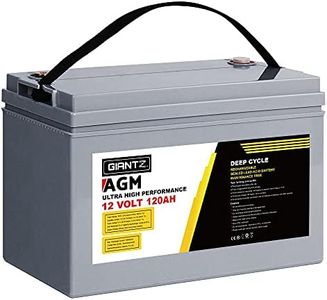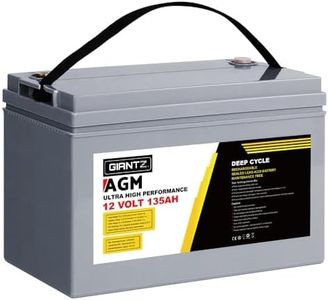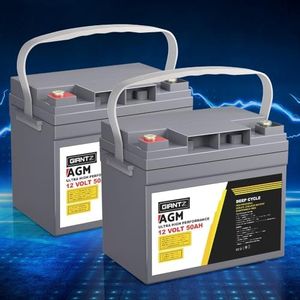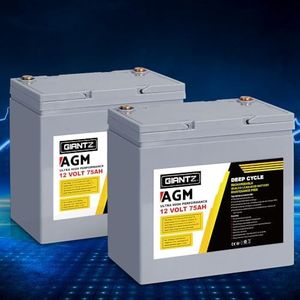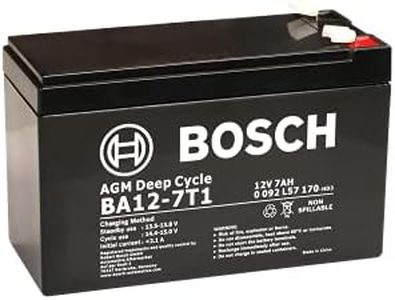We Use CookiesWe use cookies to enhance the security, performance,
functionality and for analytical and promotional activities. By continuing to browse this site you
are agreeing to our privacy policy
10 Best Agm Rv Batteries
From leading brands and best sellers available on the web.Buying Guide for the Best Agm Rv Batteries
Choosing the right AGM (Absorbent Glass Mat) RV battery is essential because it powers your lights, appliances, and other electronics when you’re on the road or camping away from hookups. To make a good choice, it's important to understand your power requirements, how you intend to use your RV, and how different battery specifications correspond to your usage. You'll want a battery that fits your RV, meets your typical daily usage needs, and offers reliability and longevity. Understanding key specifications will help ensure you get a battery that won’t leave you stranded.Battery Capacity (Ah - Ampere Hours)Battery capacity indicates how much electrical charge a battery can store and is measured in ampere-hours (Ah). This spec tells you how long the battery can provide power to your devices. Lower capacities (50-100Ah) are suitable for light or occasional use, such as powering a few lights or charging devices. Mid-range capacities (100-200Ah) are better for extended trips or running more appliances like a small refrigerator. High capacities (200Ah+) are best for heavy users with multiple appliances or longer periods off-grid. Assess your daily power usage and match your needs to the battery capacity; frequent boondockers and people with lots of electronics should lean toward higher capacity.
Voltage (V)The voltage of an RV battery, typically 6V or 12V, indicates the electrical potential. Most RVs use 12V systems, but some setups combine multiple 6V batteries in series. Ensure the battery voltage matches your RV’s electrical system. If in doubt, check your RV manual to determine what’s required. Choosing the wrong voltage can result in incompatibility with your system.
Depth of Discharge (DoD)Depth of Discharge (DoD) tells you how much of the battery’s capacity can be used before recharging without causing damage. For AGM batteries, it’s usually safe to use 50-80% of the total capacity. Batteries that support deeper discharges are better for users who need to rely on their battery for longer stretches. If you use your RV often or stay off-grid for extended periods, a higher DoD rating provides more usable power without shortening battery life.
Cycle LifeCycle life is how many times a battery can be charged and discharged before its capacity drops significantly. AGM batteries differ in cycle life; some can last several hundred cycles, others thousands. Heavier users—those camping frequently or relying on the battery often—should look for batteries with a higher cycle life. Occasional campers can get by with a lower cycle life since the battery will go through fewer charge cycles over its life.
Weight and SizeAGM batteries come in various sizes and weights. Your RV’s battery compartment will limit what you can fit. Larger capacities typically mean heavier, bulkier batteries, which can be an issue if space and weight are a concern. Always measure your available space and consider if you need to move the battery often. Make sure to choose a battery that fits your compartment and doesn’t exceed your RV’s weight restrictions.
Maintenance RequirementsWhile all AGM batteries are generally low-maintenance compared to other battery types, quality and design can influence things like spill resistance and the need for ventilation. For people who want the least hassle and plan to install the battery in a hard-to-access spot, look for maintenance-free models that don’t require regular checking or topping up.
Temperature ToleranceAGM batteries operate better over a wider range of temperatures than some alternatives. However, not all AGM batteries are equal—some are rated for more extreme hot or cold. If you plan to camp in very cold winters or hot summers, it’s wise to choose a battery rated for those conditions to avoid loss of capacity or battery failure.
